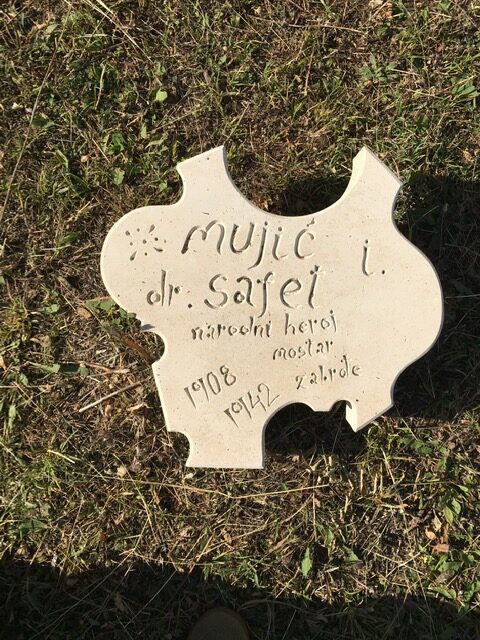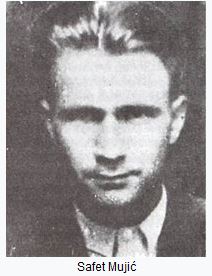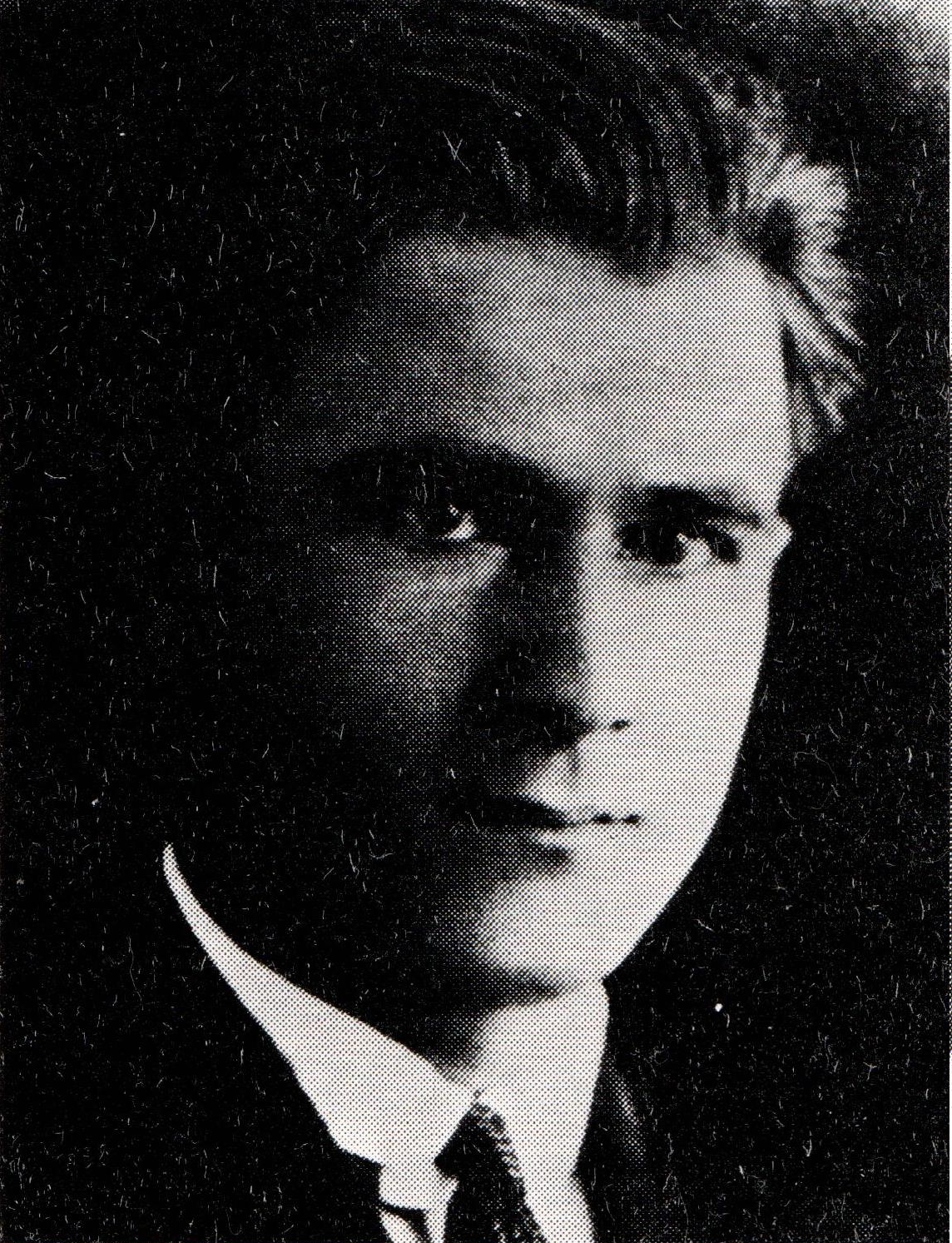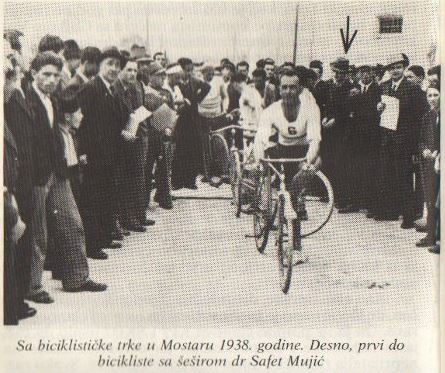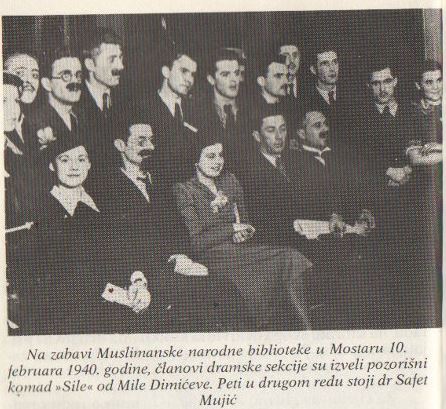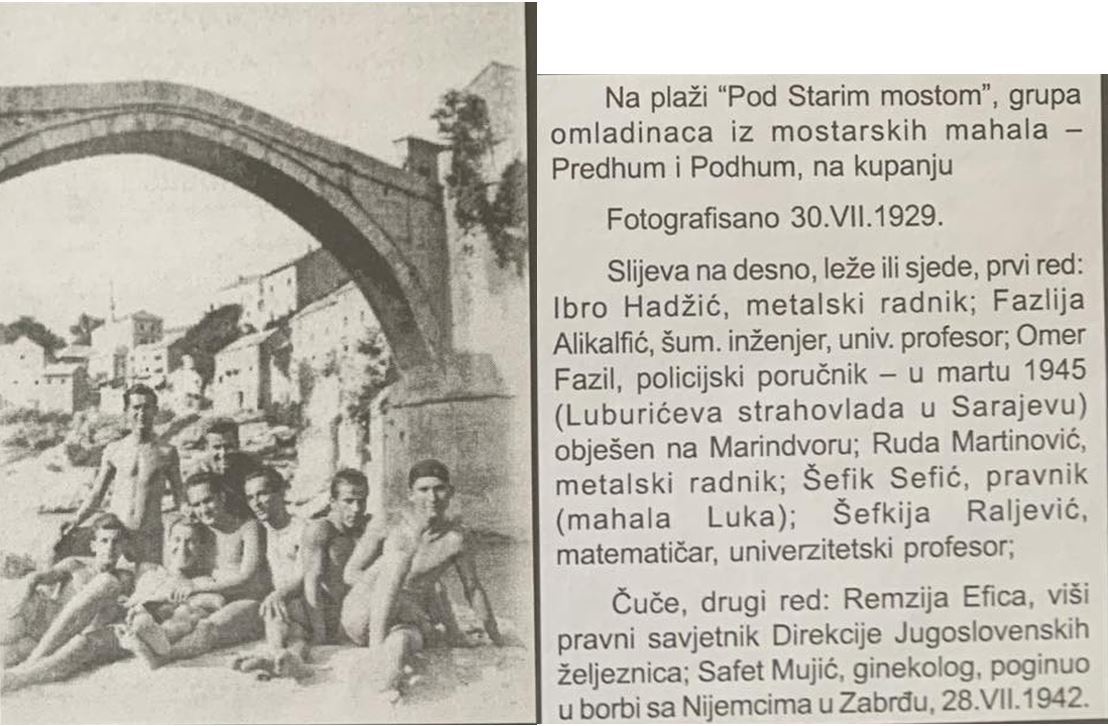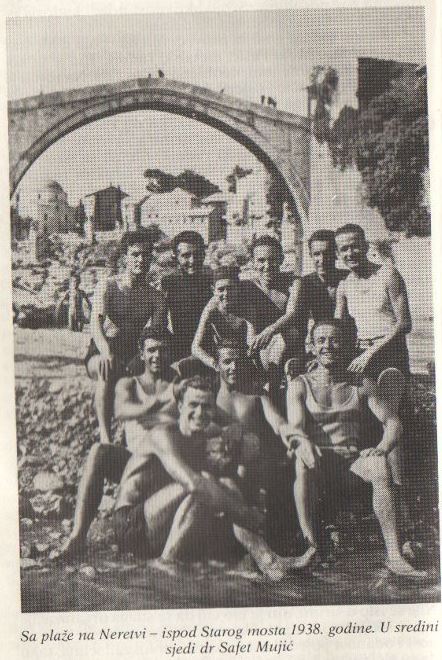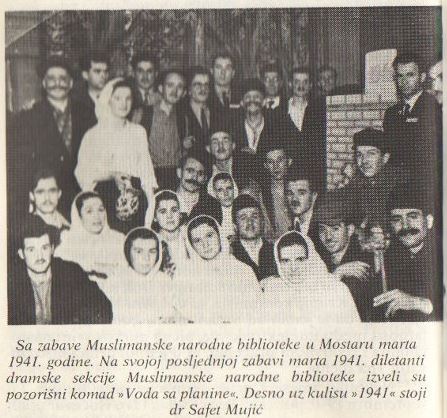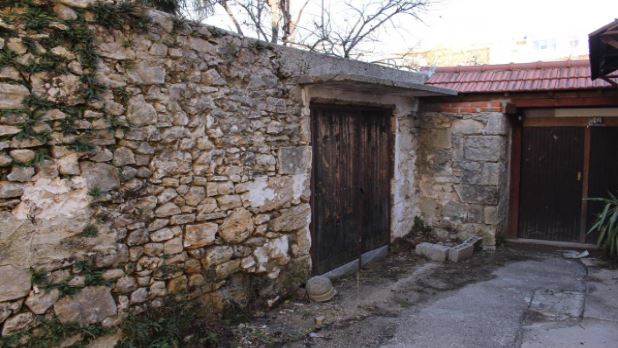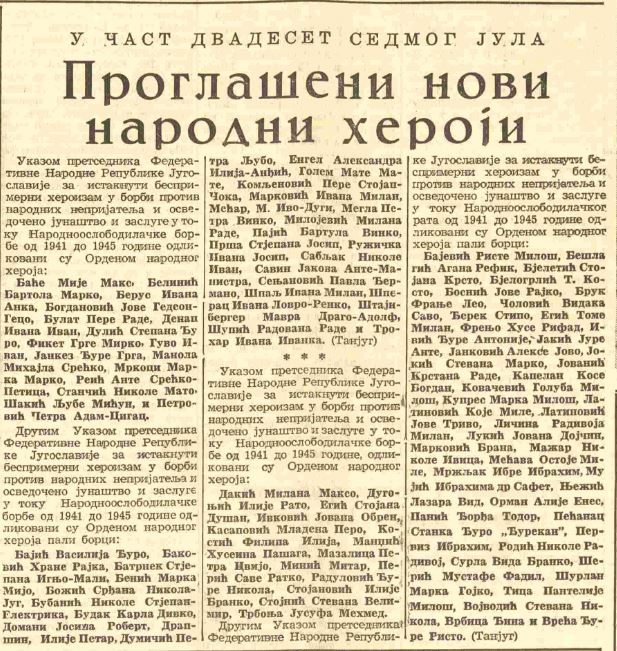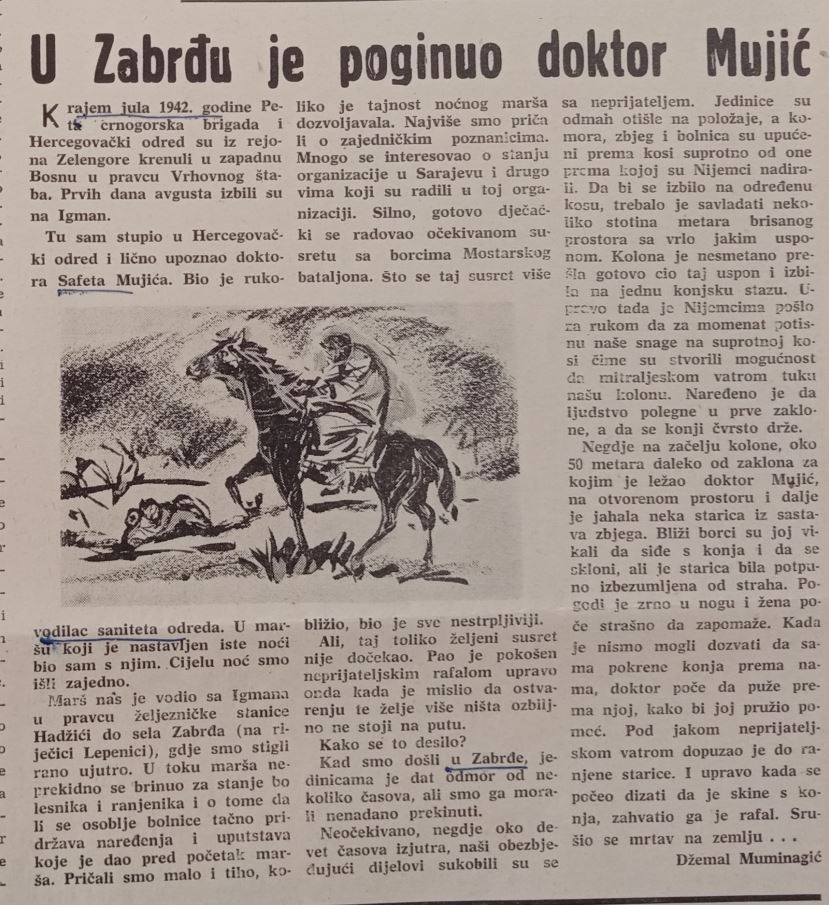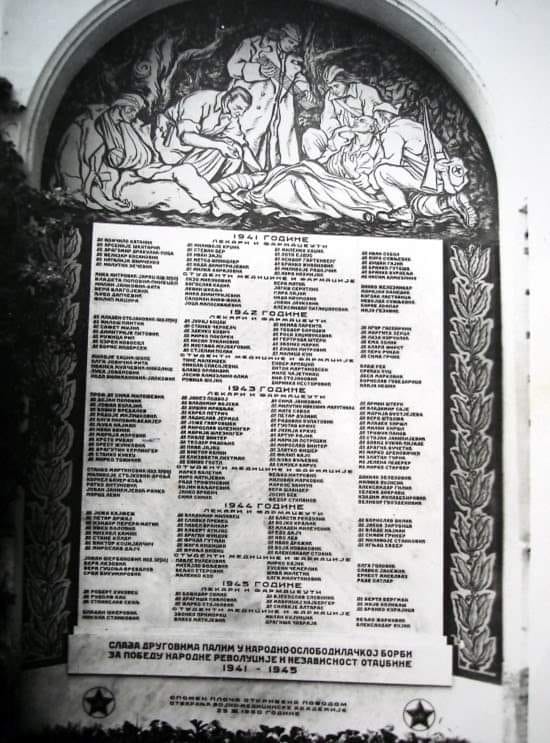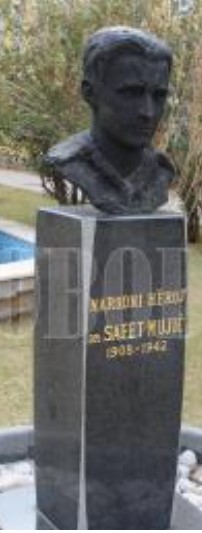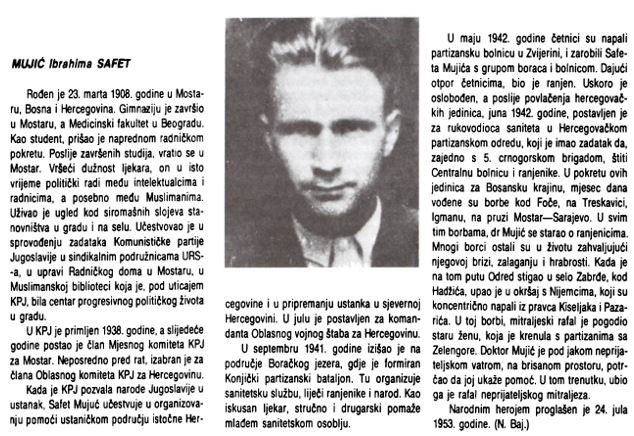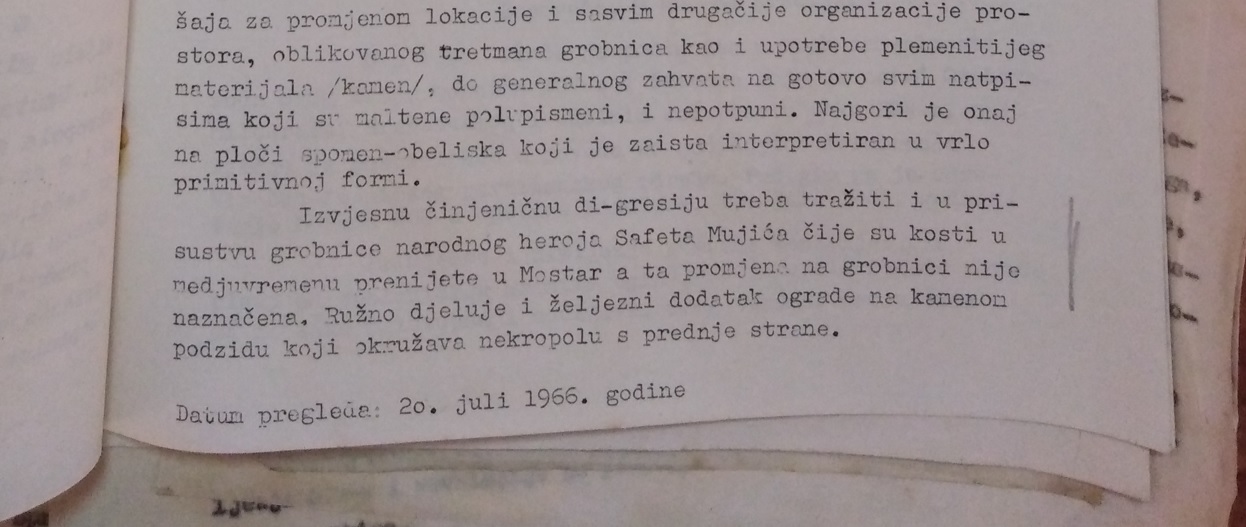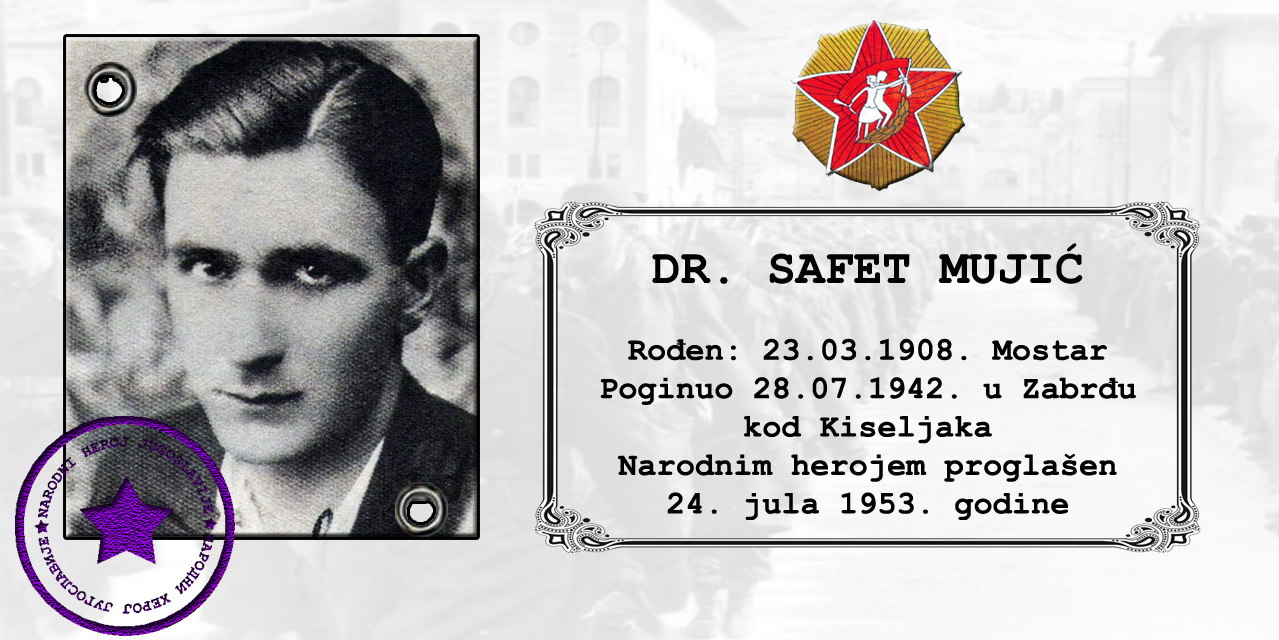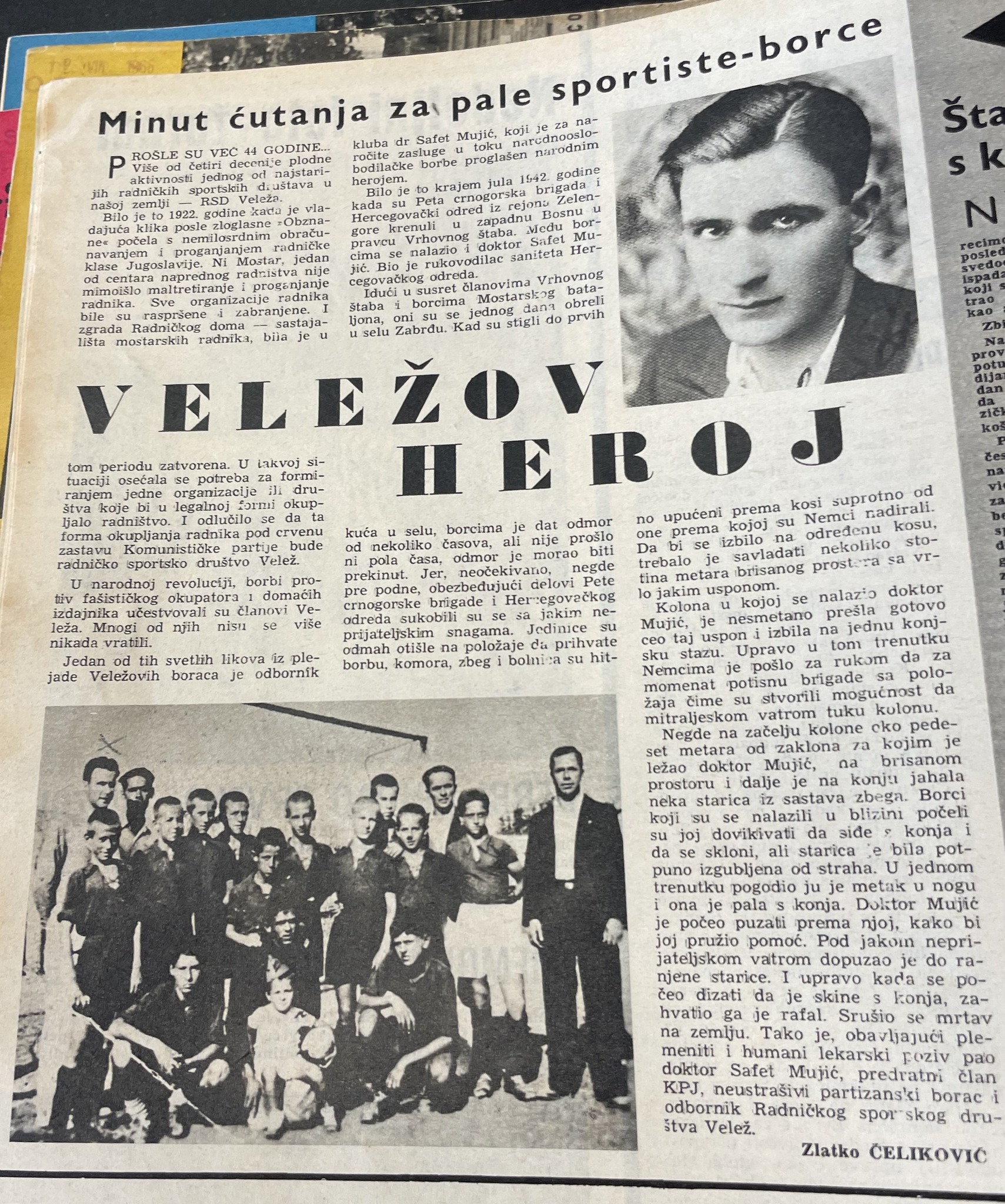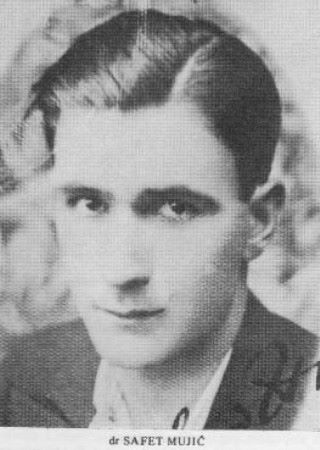
brochure "Partizanski spomenik u Mostaru" (1980)
book “Spomenica Mostara 1941-1945.”
another document or proof of the memorial stone (e.g., a photograph).
dr Safet I. MUJIĆ, national hero
Dr. SAFET (IBRAHIMA) MUJIĆ, born on March 23, 1908, in Mostar, a physician, humanist, and prominent figure in the workers’ movement, was one of the organizers of the uprising in Herzegovina. He worked as a doctor in the battalion hospital in Borci and led the medical unit at the Operational Headquarters for Herzegovina.
He completed elementary school and high school in Mostar and attended the Medical Faculty in Belgrade. For a period of time, he was the president of the football club “Velež.” During his studies, he joined the student revolutionary movement at the University of Belgrade and became a sympathizer of the Communist Party of Yugoslavia (KPJ). After completing his studies, he returned to Mostar and worked as a doctor. He had a great reputation among the poor population in Mostar and surrounding villages. He became a member of the KPJ in 1938 and the following year, he joined the Local Committee of the KPJ for Mostar. Shortly before the war, he was elected as a member of the Regional Committee of the KPJ for Herzegovina. In the spring of 1939, together with the superintendent Feodor Lukač and Zvonko Marić, he organized a first aid course for the youth of Mostar, many of whom would become future partisans.
After the occupation of Yugoslavia in 1941, he actively participated in organizing assistance in the rebel-held area of eastern Herzegovina and preparing for the uprising in northern Herzegovina.
In July 1941, he was appointed as the commander of the Regional Military Headquarters for Herzegovina, and together with Mustafa Pašić, he led a group of communists from Mostar to the area around Boračko Lake, where they organized a partisan detachment. While resting on Jarac-kuk, the slope of Mount Velež, the group was attacked by the Ustasha forces, and they withdrew to Mostar. The defeat of the group resulted in Dr. Mujić and Pašić being expelled from the KPJ on the orders of Svetozar Vukmanović Tempo, a member of the Politburo of the Central Committee of the KPJ and the Supreme Staff. According to Seferović, Tempo insisted that both of them be executed, but Avdo Humo refused to carry out the order “…because in Mostar, he would not be able to find a communist willing to carry out the sentence against the most prominent and beloved communists in the city.”
In September 1941, he left Mostar again and went to the area of Boračko Lake, where the Konjic Partisan Battalion was formed. In this battalion, he organized the medical service and treated the wounded and sick fighters, as well as the people from the surrounding areas. From one recollection: “(Dr. Mujić) organized a hospital in Borci at the Šantić Villa. He gathered several comrades who had completed the nursing course in Mostar. In those days, Dr. Mujić organized the medical service in the companies, introducing regular laundry, bathing of the fighters, and steaming of clothes in the ‘Partisan barrels.’ Nurses were assigned in the companies and platoons, responsible for the hygiene of the fighters and the care of the wounded and sick in the company clinics. Attention was also paid to the cleanliness of the kitchens. The hospital and company clinics provided help to the sick locals as well. Regular procurement of medical supplies and medicines from Mostar and Konjic was organized based on lists compiled by Dr. Mujić for doctors Hlubna, Marić, Opijač, and Rajković. He organized multi-day courses at the hospital for the company nurses. He held meetings with women in the villages, explaining the importance of hygiene in the family, during childbirth, and in raising children. All of this made Dr. Mujić the most popular and beloved person among the people and fighters.”
On May 29, 1942, the Chetniks attacked the partisan hospital in Zvijerina and captured Dr. Safet with a group of fighters and the hospital. However, he was soon liberated in a partisan operation. In June 1942, he was appointed as the head of the medical unit in the Herzegovina Partisan Detachment, tasked with protecting the Central Hospital and the wounded. In the movement of these units towards Bosanska Krajina, Safet took care of the wounded, and many of them survived thanks to his care, dedication, and courage, even in the absence of medical supplies and medications.
In the village of Zabrđe near Hadžići on August 28, 1942, the Detachment engaged in a clash with the Germans. During the battle, a machine gun burst hit an elderly woman who was traveling with the partisans from Zelengora. Despite intense enemy fire, Dr. Safet ran into the open to provide assistance to the wounded woman but was cut down by machine gun fire and died on the spot.
Karlo Drago Miletić summed it up in his final assessment: “Doctor Safet Mujić distinguished himself with humanity, great love not only for patients and the wounded but also for the staff he worked with. He played a significant role in health education of the people in liberated territory. He visited villages and provided assistance to the sick. He became the epitome of human nobility, not only as a doctor but also as a person and a fighter. He expected the same human qualities from the rest of the staff working in the Partisan Hospital. The people in the surrounding villages quickly became familiar with their legendary soldier, compassionate doctor, and human being. He represented a true people’s doctor.” Dr. Mujić was described as a “renowned revolutionary and humanist,” “one of the most popular people in Mostar.” He treated fighters and the people, earning the titles of “the mother of the poor” and “the doctor of the poor.”
By the decree of President of the Federal People’s Republic of Yugoslavia, Josip Broz Tito, on July 24, 1953, Dr. Safet Mujić was proclaimed a national hero.
In his honor, the Regional Medical Center and a street in Mostar bear his name. In the South Camp, in the park in front of the Hospital, his bust stands. The names of Mostar doctors Safet Mujić and Berta Bergman are inscribed on the memorial plaque for doctors, pharmacists, and medical and pharmacy students at the building of the Military Medical Academy in Belgrade. A memorial plaque dedicated to the fallen doctors and other medical workers in Mostar was erected on the wall of the State hospital in Mostar in 1950s.
The mortal remains of Dr. Safet Mujić were buried at the Partisan Cemetery in Mostar after the war, or they were transferred from the place of his death, which still bears a marker. (source: spomenicinob.info – see the last photograph).
EXCERPT FROM LITERATURE:
“At the beginning of August, we broke through to Igman. It was there that I joined the Herzegovina Detachment and personally met Dr. Safet Mujić. He was the head of the medical unit of the Herzegovina Detachment. During the march that continued the same night, I was with Dr. Mujić. We marched together all night. The march led us from Igman towards the Hadžići railway station to the village of Zabrđe (on the Lepenica River), where we arrived early in the morning. Throughout the march, he constantly cared about the condition of the sick and wounded, and whether the hospital staff was following the orders and instructions he had given before the march. We spoke little and quietly, as much as the secrecy of the night march allowed. We mostly talked about our well-known comrades. He was highly interested in the state of the organization in Sarajevo and the comrades working in that organization. He was tremendously excited, almost childlike, about the expected meeting with the fighters of the Mostar Battalion. As the meeting approached, he became increasingly impatient. However, he did not live to see this long-awaited meeting. He fell, cut down by enemy gunfire, just when he thought that nothing serious stood in the way of realizing that desire. How did it happen? When we arrived in Zabrđe, the units were given a few hours of rest, but we had to abruptly interrupt it. Unexpectedly, around 9 o’clock in the morning, our security units clashed with the enemy. The units immediately went to their positions, and the headquarters, the convoy, and the hospital were directed towards the slope opposite to the one the Germans were advancing on. To reach a specific slope, we had to overcome several hundred meters of open space with a very steep incline. The column successfully crossed almost the entire ascent and emerged onto a horse trail. It was precisely then that the Germans managed, for a moment, to push our forces back to the opposite slope, creating an opportunity to subject our column to machine gun fire. It was ordered for the personnel to take cover in the first available shelters, while the horses were held tightly. Somewhere at the rear of the column, about 50 meters away from the shelter where Dr. Mujić lay, a woman from the convoy, an elderly lady, was still riding in the open space. The closer fighters shouted at her to dismount from the horse and take cover, but the old lady was completely lost in fear. A bullet struck her leg, and the woman began to scream horribly. We couldn’t get her to move the horse towards us, so the doctor began to crawl towards her to provide assistance. Crawling under intense enemy fire, he reached the wounded old lady. And just as he began to rise to lift her off the horse, a burst of gunfire hit him. He fell dead to the ground. That’s how Dr. Safet Mujić, a pre-war member of the Communist Party of Yugoslavia (KPJ) and a fearless partisan fighter, fell while fulfilling his medical duty. Our units immediately pushed back the enemy and continued to break through towards western Bosnia.” (Džemal Muminagić, Hercegovina u NOB, Part 1)
Read the book about Dr. Safet Mujić: PDF – Partisan Doctor Safet Mujić
https://hr.wikipedia.org/wiki/Safet_Muji%C4%87; grupa autora (1986): Hercegovina u NOB 2. dio, Beograd; http://www.most.ba/099100/108.aspx; Safet Mujić – Narodni Heroj Iz Mostara ( BiH ) (yu-nostalgija.com); Ćemalović, Enver (1986): Mostarski bataljon, Mostar; Konjhodžić, Mahmud (1981): “Mostarke”: fragmenti o revolucionarnoj djelatnosti i patriotskoj opredjeljenosti žena Mostara, o njihovoj borbi za slobodu i socijalizam, Opštinski odbor SUBNOR-a Mostar.; Refik Hamzić, Mostarci narodni heroji Jugoslavije, Mostar, 1986.; Seferović, Mensur (1957): „Tajna partijske ćelije“, Sarajevo; Mulić, Sulejman (2012): Zdravstvene prilike u Hercegovini tokom Drugog svjetskog rata sa posebnim osvrtom na Konjičko područje, BOSNA i Hercegovina 1941: novi pogledi : zbornik radova / [glavni i odgovorni urednik Husnija Kamberović] – Sarajevo : Institut za istoriju; grupa autora (1961): Hercegovina u NOB 1. dio, Beograd, Vojno delo ; grupa autora (1986): Hercegovina u NOB 2. dio, Beograd; Seferović, Mensur: Mostarski kolopleti, edicija “Mostar u borbi za slobodu”, knjiga 8, Mostar; Momčilo Radović: članak „Aktivnost KPJ i Narodnooslobodilačkih odbora na slobodnoj teritoriji u sjevernoj Hercegovini 1941-1942. godine”, Hercegovina br. 1, str 234; https://sr.wikipedia.org/sr-el/%D0%A1%D0%BF%D0%B8%D1%81%D0%B0%D0%BA_%D0%BB%D0%B5%D0%BA%D0%B0%D1%80%D0%B0_%D0%BF%D0%BE%D0%B3%D0%B8%D0%BD%D1%83%D0%BB%D0%B8%D1%85_%D1%83_%D0%9D%D0%9E%D0%A0 ; grupa autora: Spomenica Mostara 1941-1945; http://www.yugopapir.com/2016/06/dr-safet-mujic-rukovodilac-saniteta.html; https://sr.wikipedia.org/sr-el/%D0%A1%D0%B0%D1%84%D0%B5%D1%82_%D0%9C%D1%83%D1%98%D0%B8%D1%9B
Photos: S. Demirović; https://www.oslobodjenje.ba/vijesti/bih/povratak-narodnih-heroja-na-ulice-449064 ; https://www.facebook.com/photo/?fbid=1791864501099121&set=a.1791864097765828; Narodni heroji Jugoslavije A-M, Institut za savremenu istoriju, Partizanska knjiga, Ljubljana, Narodna knjiga, Beograd, Pobjeda, Titograd, 1982,
https://www.oslobodjenje.ba/dosjei/za-drugove-doktor-za-siromasne-sirotinjska-majka
Do you have more information about this fighter? Share your stories and photographs. Let's keep the memory alive!
